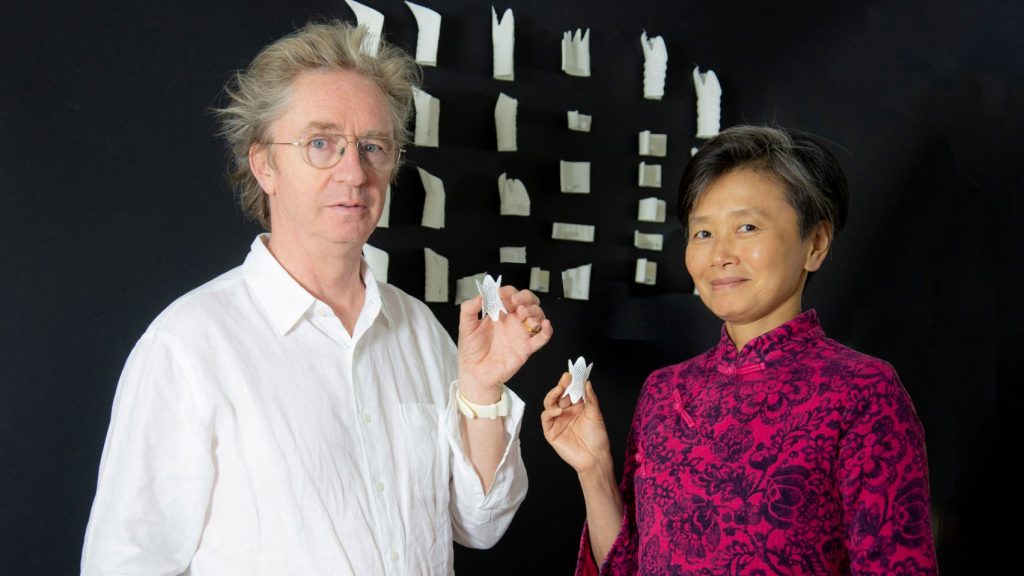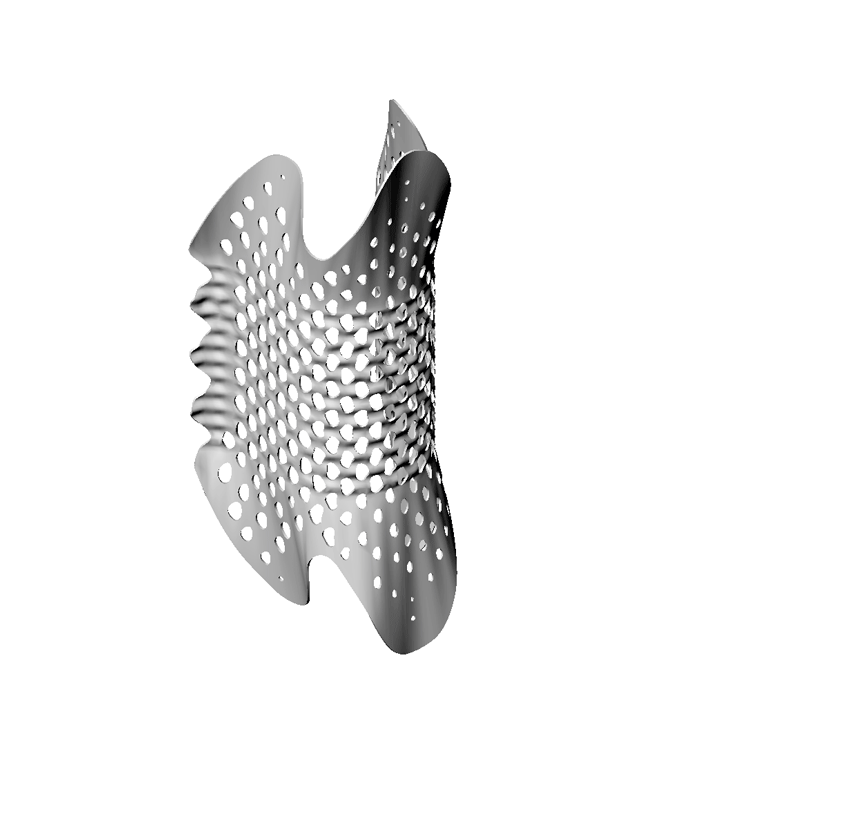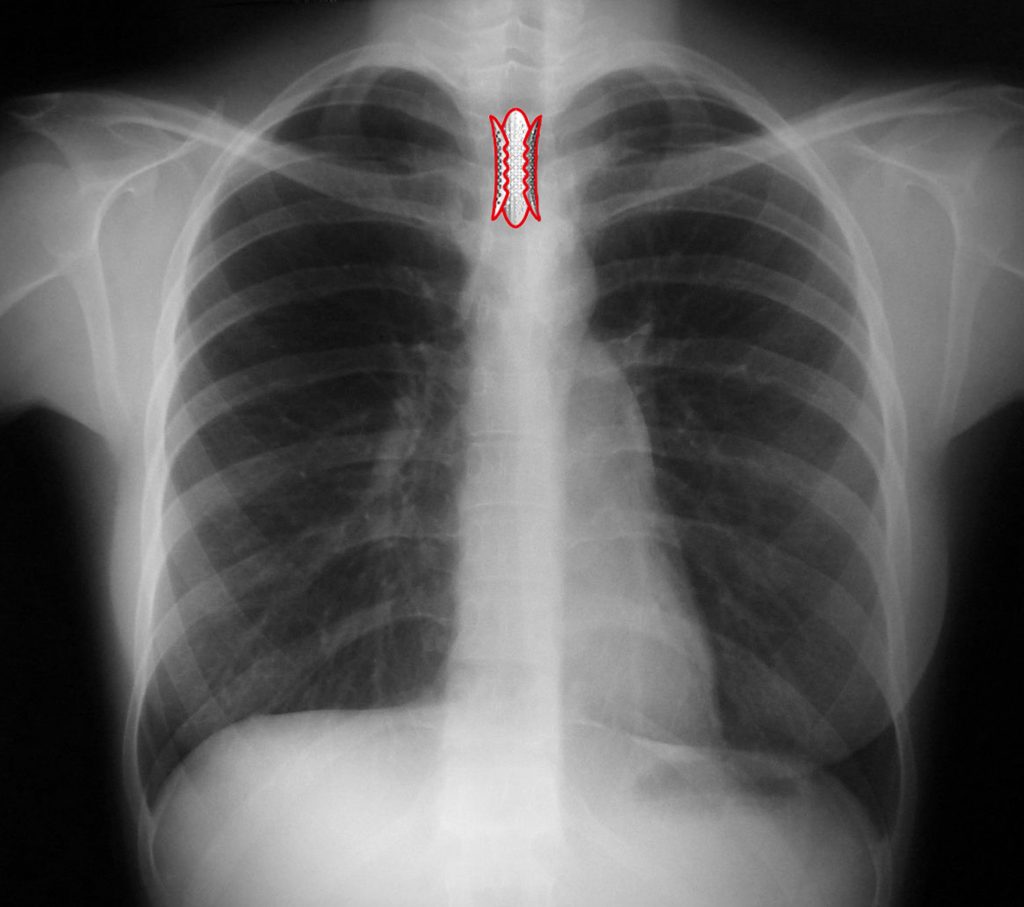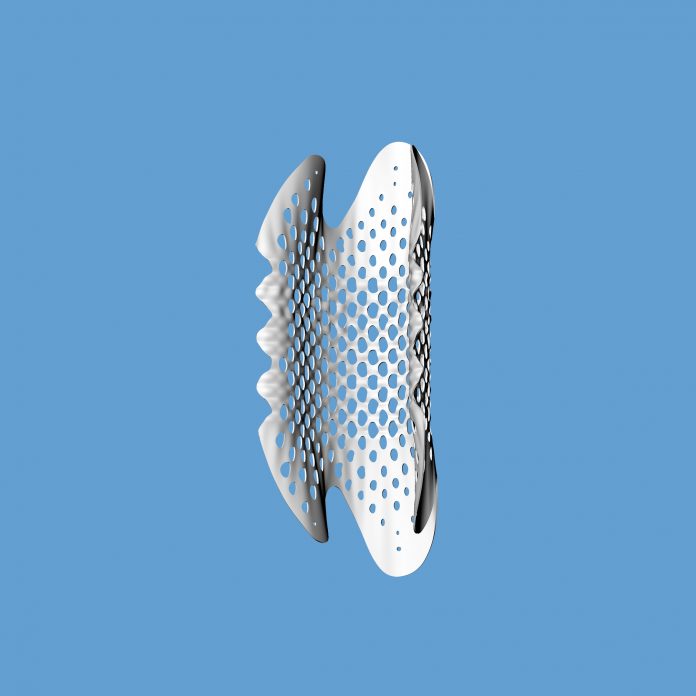| Augusta Pownall |

Architects Mike Tonkin and Anna Liu have created a prototype stent that adapts to a patient’s throat for use after tracheal transplant surgery.
Tonkin and Liu, founders of London-based architecture studio Tonkin Liu, adapted the design of their single surface structural technology – called the shell lace structure – to create the stent.

Unlike the tubular mesh stents commonly used after surgery on the windpipe, their version is C-shaped and fits to the individual shape of each person’s throat.
The prototype has been manufactured from medical grade silicone with a perforated surface that allows the wound to breath, and makes drug delivery to the tissues possible, which together prevent infection.

Alerted to an unmet medical need by a clinical researcher at a talk they took part in 2014, the architects set about making prototypes of possible stents using the structure as their starting point.
They worked with engineers Arup to develop the concept, and secured funding for a year long research and development project from Innovate UK, the British government’s innovation fund.
The architectural version of the shell lace structure has now been adapted and recreated 500 times smaller for the medical device.
These architects took a large structure from other existing designs and made it into a usable medical device. They also examined a custom-fit design so the stent adjusts to each person. This approach could be interesting because there may be a need for a more personal design instead of existing universal solutions.




